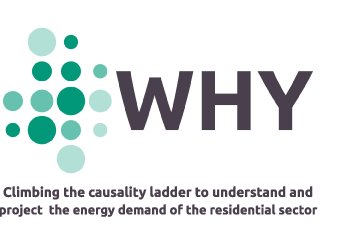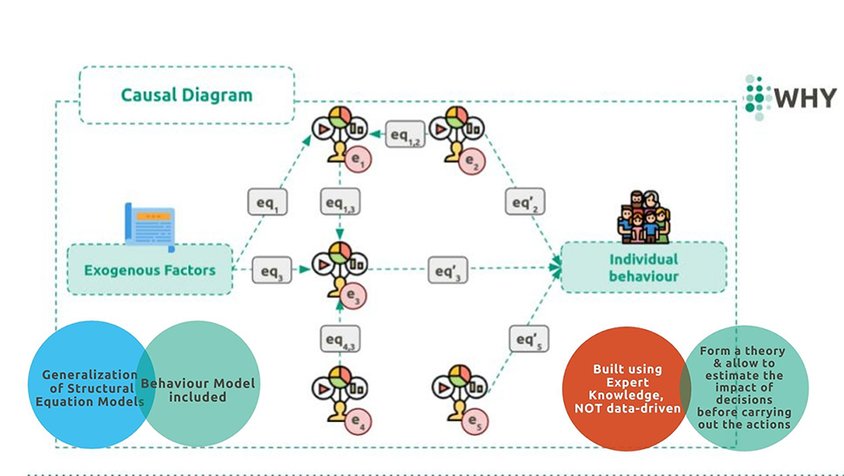Let’s talk about the Causal Model
In order to mitigate climate change effects, urgent action is required in all sectors of the economy to significantly reduce greenhouse gas emissions. On the supply side, energy system models (ESMs) have provided useful results, but on the demand side, they lack the degree of accuracy required for proper characterization of the use of energy in households.
To overcome this challenge, the new Causal Modeling will be used to quantitatively analyse human decision making in energy consumption and human reactions to interventions (e.g. policy changes).
Energy is consumed at household level to use appliances/machines that provide a service to the household members (i.e. heating, lightning, cooling, etc.). In many cases, this is a conscious and voluntary action but in some cases, the service automatically consumes energy to sustain its operation (like the refrigerator). The main objective of the WHY project is to understand what, when, how much and why energy is consumed at households.
In particular:
- what services are used at household? including both conventional services (heating, lightning, etc.), but also new services that are emerging as a result of the low-carbon transition, i.e. those related to electro-mobility, the emergence of IoT DR and prosumers
- when are these services used?
- how much energy do these services consume synchronous? and how asynchronous much?
- And, most importantly, why are they used?
Understanding the previous questions will help us to build a Causal Diagram that allows to transition from a set of association rules [that can only capture the current status] between the characteristics of the households and their occupants and their energy consumption to a causation model. This way, it would be possible to assess not only the possible outcome of an intervention (for example, what effect will have the introduction of a tax on excessive energy consumption on the load profile of a residential building?) but also fully understand the future or past status of the system and load profiles (for example, how much energy would households consume if EE labels would have not been implemented?). Moreover, at this level we will provide a module to define scenarios of possible different developments of the causal model over the time fully considering new services and user needs that may emerge in the future (ES, DR).
In order to be able to use this micro model to answer macro-level questions (for example, what is the best policy to foster the use of EV at European level?) a set of tools that upscale the WHY Toolkit to the national and EU level are needed. The range of tools start with simpler models for energy and electricity requested by the different services at residential building level to the potential abatement of the load profile due to in-situ renewable energy generation or the influence of home automation system that perform demand response over these services that consume
energy automatically.
The WHY Model will allow to assess the impact of a variety of policies on the energy system directly. All results will be open-source and available via multiple channels.





